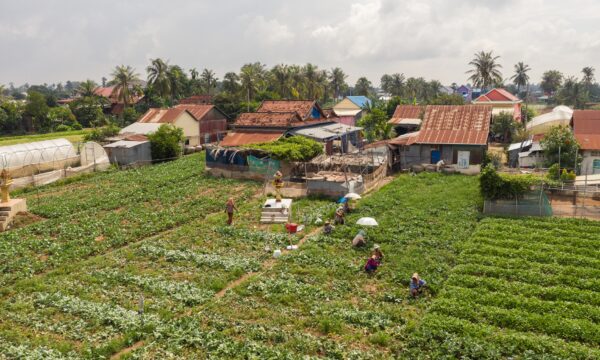Last year, one of the strongest El Niño events ever recorded caused significant changes to weather patterns around the world. Southern and Eastern Africa were hit particularly hard and suffered some of the worst drought conditions for decades, with as little as a quarter of the expected rainfall in the last few months of the year1. Drought is still having devastating impacts on crop yields in Africa, and humanitarian crises have been declared in the worst hit countries.
Maize is the most widely grown crop in Africa, and is extremely sensitive to drought as it relies on rainwater for irrigation, and will produce significantly lower yields as a result of heat stress and shortened cropping seasons. Recent projections suggest that the majority of maize crops will experience production losses if farmers do not take action. In the best scenario, the losses were at 12% but in the worst case scenario, production was down by 40%2.

Projected median maize yield change (%) for RCP8.5 (2070-2099) compared to 1980-2010)3
While some regions suffer significant losses, it’s expected that others will cease to be suitable for cultivating maize at all. Large areas of the Sahel region, including Senegal, Burkina Faso and Niger will simply become too warm for maize to grow successfully.
Many farmers will be forced to adapt, for example by switching to grow drought tolerant varieties of maize, or more climate resilient crops such as sorghum and millet4. However, changing the behaviour of farmers, as well as the tastes of those consuming the crops, is difficult. Some farmers in Zimbabwe report that children really do not like sorghum or millet5!
Although the most recent devastating weather changes have been attributed to unusually strong El Niño, experts have said that the situation is being exacerbated by a “perfect storm” of factors including climate change, desertification and land degradation, which are causing increasing frequency of flooding and drought around the world.
Central America, where urbanisation is also playing a part in the increasingly extreme weather, has also seen the devastating impacts of drought. As well as affecting crops directly, drought is also increasing the vulnerability of crops to pest outbreaks. Pests such as locusts thrive in warm, dry weather and so populations explode during drought conditions6. Locusts in Central America have caused devastating damage to crop yields in the past couple of years.
References
- Horn of Africa cross-border drought action plan 2017: Required response to safeguard livestock-based livelihoods in cross-border areas of Ethiopia, Kenya, Somalia, South Sudan and Uganda, March – June 2017 – http://reliefweb.int/report/south-sudan/horn-africa-cross-border-drought-action-plan-2017-required-response-safeguard
- Climate change impacts on African crop production – https://cgspace.cgiar.org/bitstream/handle/10568/66560/WP119_FINAL.pdf
- Assessing agricultural risks of climate change in the 21st century in a global gridded crop model intercomparison – http://www.pnas.org/content/111/9/3268.full
- Adapting maize production to climate change in sub-Saharan Africa – https://rd.springer.com/article/10.1007/s12571-013-0256-x
- Swap maize for millet? Zimbabwe’s farmers just say no – http://news.trust.org/item/20161007120959-256e5/?source=spotlight
- Bolivia begins fumigation against locust plague – http://www.bbc.co.uk/news/world-latin-america-38947470
1 Comment
Leave a Reply
Related News & Blogs
How do pest risk registers address the spread of plant pests in Africa?
Pest risk registers can help to solve problems in agriculture, addressing the growing global threat of plant pests. Moreover, changing weather patterns, led by rising temperatures, are causing them to reproduce faster and expand into new regions. In ad…
10 July 2025





[…] via The perfect storm – how drought is hitting crops hard — The Plantwise Blog […]